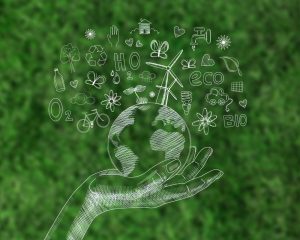In this series, we’ve looked at all aspects of the consumer packaging industry when it comes to the environment, from the scale of the problem, to what companies are doing about it, and how manufacturers and designers are responding with product innovation and aesthetics. Now we’re going to look at the future of sustainability in packaging.
But that’s not all there is to consider. In fact, there are still a few question marks in this whole transition, and this final article we’ll address some of those elephants still hanging out in the room.
Stumbling Blocks To Going Green
It’s not all so easy, unfortunately. While manufacturers, consumers, and printers tout the benefits of sustainable packaging, there are some drawbacks. For example:
- Cost. The price of change and innovation is always at the top of the list. For packaging manufacturers, switching to the use of green materials can be expensive. In addition, the production process can be negatively affected as can other operations within the system. This will add cost. And finally, the materials involved in green packaging and the sourcing of both unused and used materials can add up.
- Disposal. Another drawback is the requirement of how to dispose of the materials in green packaging. Unfortunately, it’s been reported that there can be a high risk of cross-contamination if these materials are disposed of incorrectly. So if we want to switch to reusable, recyclable, or biodegradable packaging, towns, cities, and states need to spend money to manage these materials (and then we’re back to the issue above). Nevertheless, to do this properly, new infrastructure needs to be built for the collection, processing, and conversion of this packaging. If not, the circular economy cannot be built.
- Consumer Adoption. Companies are not the only entities that need to transition to environmentally-friendly packaging. In fact, when brands decide to shift to sustainable packaging, they must recognize that consumers might not accept this new experience. Even though consumers want to be more environmentally friendly, they may grumble if their new eco-friendly package does not hold up as well as the original. Thus, it will be necessary to find optimized material that performs as well as non-sustainable alternatives, that protects goods, and meets consumer expectations.
The Future Of Sustainability In Packaging
As packaging continues to grow, more and more businesses will find sustainable options. Each member—consumer, printer, and brand—play a necessary role to make it a success. Structural designers are working to make packages more secure. Creatives are formulating new ideas to use lighter weight paper products and sustainable inks. Paper manufacturers and chemical companies are tasking their research and development teams to develop new water-based coatings. Brands are questioning their loyal customers as to what sustainable packaging they will purchase. Everyone can foster integration and innovation to move sustainable packaging into new frontiers.
And United Label is playing our small part in the system, as well. So when you’re ready to start your printing job, give us a call at (973) 589-6500 for a free quote, or contact us here.
